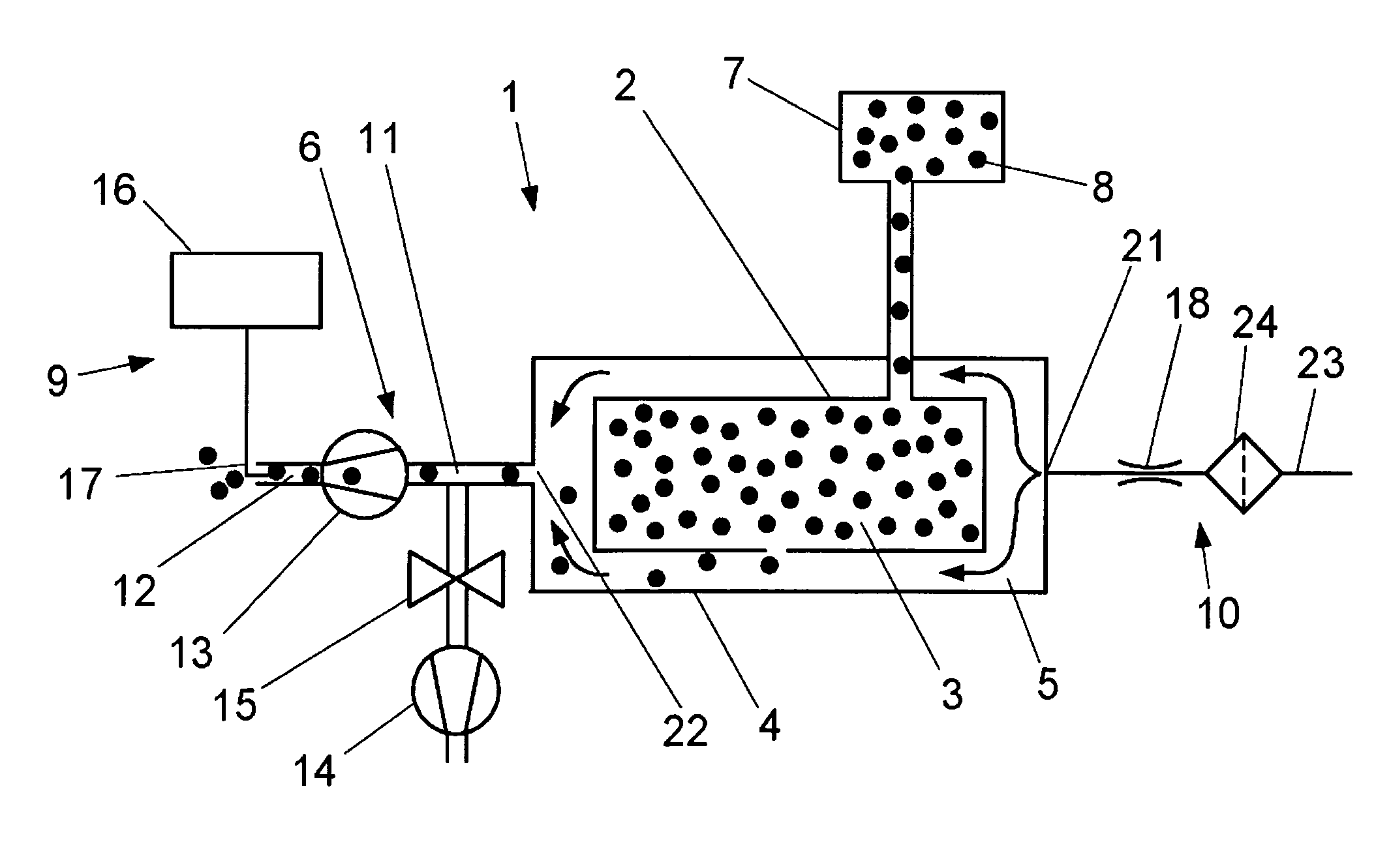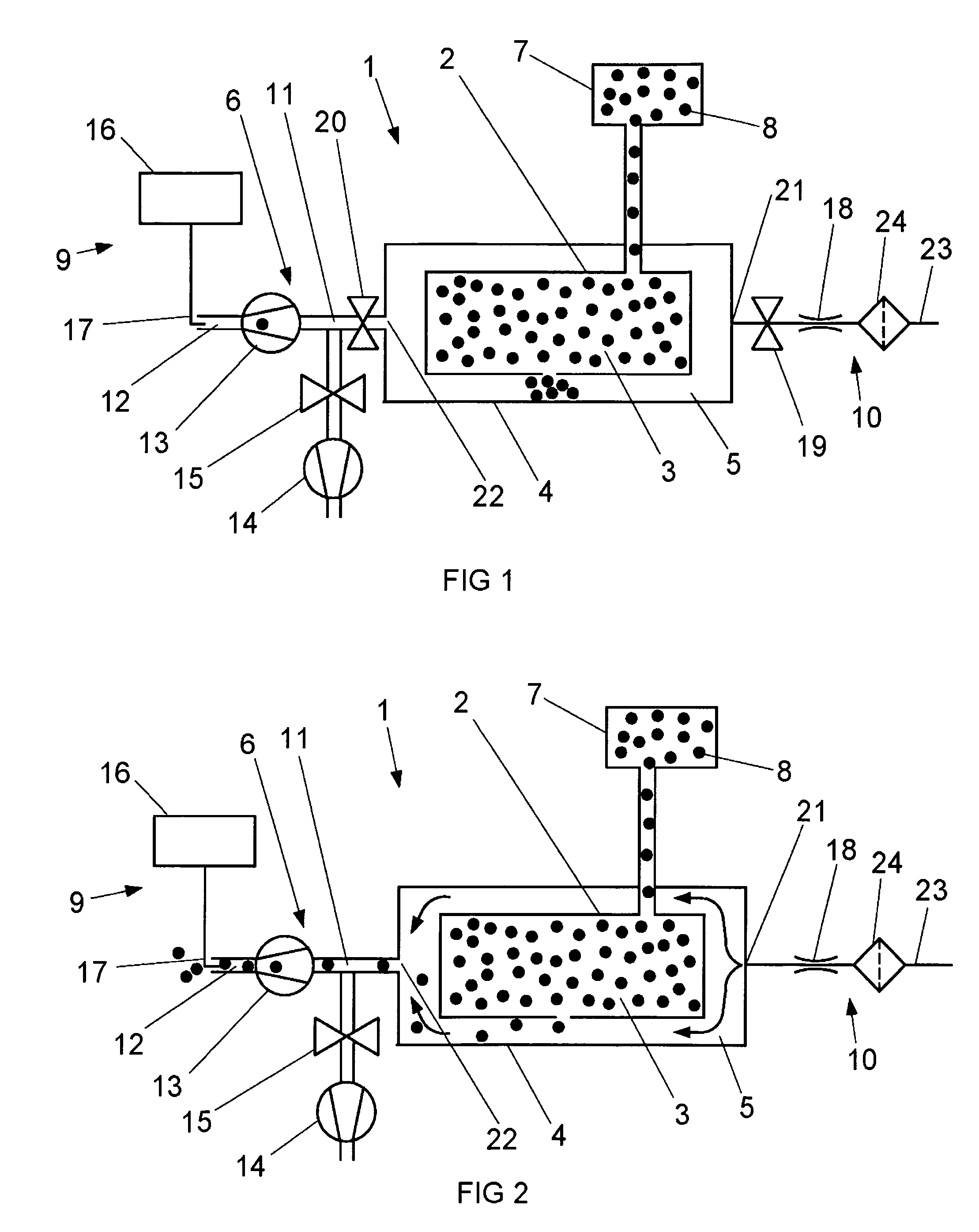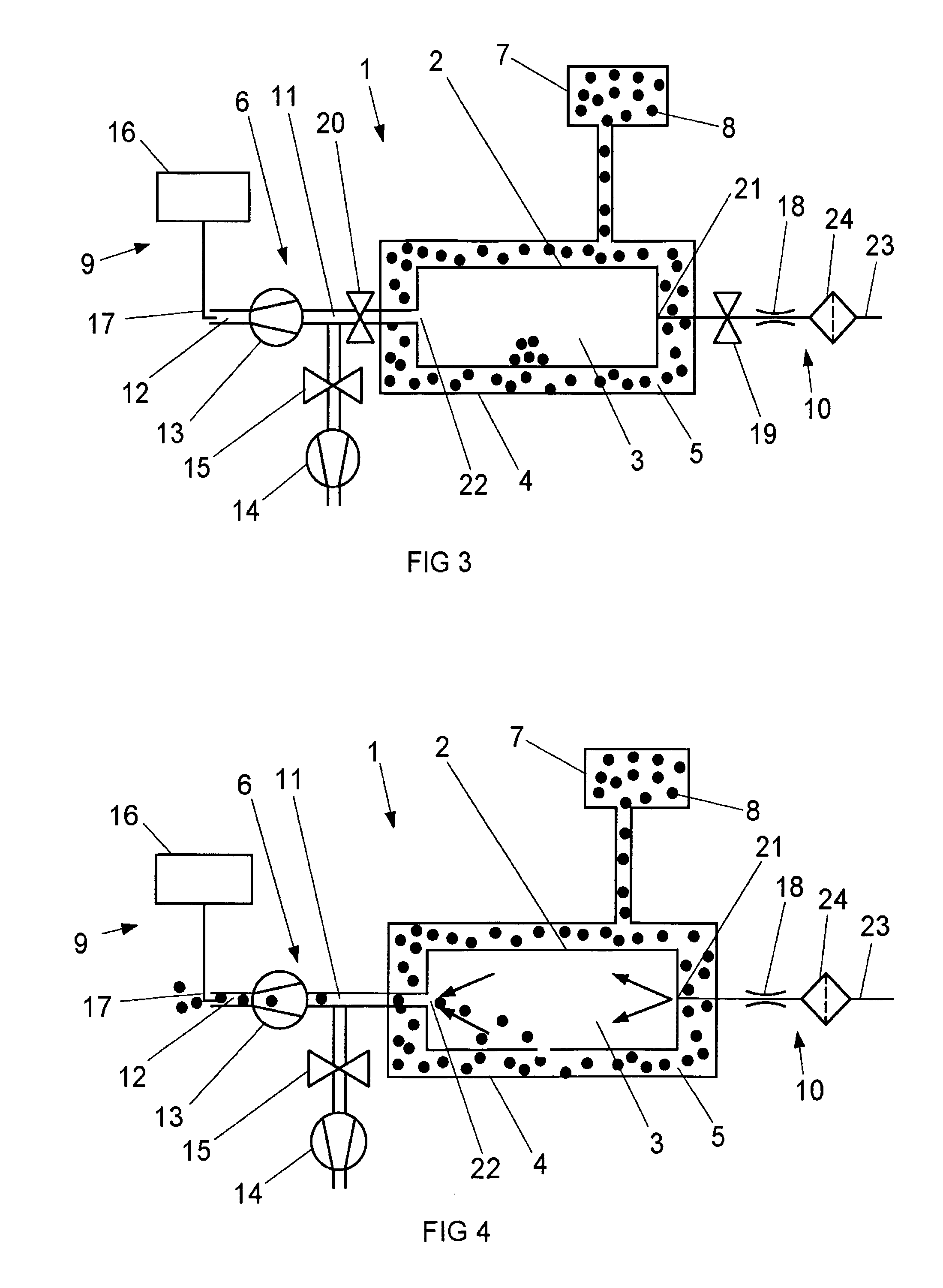System and method for determining the leakproofness of an object
a leakproofness and object technology, applied in the field of systems for determining the leakproofness of objects, can solve the problems of high operator dependence, high cost, and limited sensitivity of low-cost methods, and achieve the effects of reducing the cost of geometrical volume reduction, high vacuum system complexity, and high operator dependen
- Summary
- Abstract
- Description
- Claims
- Application Information
AI Technical Summary
Benefits of technology
Problems solved by technology
Method used
Image
Examples
first embodiment
[0046]FIG. 1 shows a system 1 in accordance with the present invention, which system 1 is arranged to be used for determining the leakproofness or the impermeability of an object 2 having a first cavity 3. the system 1 is suited to be used for applying a tracer gas method in which the object to be tested is placed in a chamber or enclosure. More particularly, the system 1 is suited to be used for applying the above described accumulation method. The system 1 comprises a closed chamber or enclosure 4 having a second cavity 5, evacuating means 6, supplying means 7 for supplying a tracer gas 8, detecting means 9 being sensitive to the tracer gas 8 and introduction means 10 for introducing a transport gas.
[0047]The chamber 4 is arranged to envelope the object 2 to be tested for leakage within the second cavity 5, which therefore has such a size and shape that it is able to accommodate the object 2 to be tested. When the object 2 is located within the second cavity 5, there is also some ...
third embodiment
[0075]In order to be able to test leakage from the second cavity 5 and into the first cavity 3, the supplying means 7 is then arranged to supply the tracer gas 8 to the second cavity 5 and the detecting means 9 is arranged to detect any tracer gas in the first cavity 3. Thus, the detecting means 9 is then arranged to communicate with the first cavity 3 through the evacuating means 6. Furthermore, the introduction means 10 is arranged to introduce the transport gas into the first cavity 3 towards the detecting means 9. The inlet 21 is in the third embodiment located between the flow regulating means 18 and the object 2 and the outlet 22 is located between the object 2 and the inlet 11 of the evacuating means 6.
[0076]FIG. 4 shows a fourth embodiment of the system 1, which is arranged to be used for leakage testing applying the above described steady-state analysis method. The fourth embodiment resembles the third embodiment except for concerning the introduction means 10, the first va...
fifth embodiment
[0089]Furthermore, in an alternative of the fifth embodiment, the method comprises at least two steps of introducing transport gas during one controlled time interval, which steps are performed in sequence. If the pulse is transported towards the detecting means by means of the evacuating means, then the method also comprises an evacuation time interval for each step of introducing transport gas.
[0090]The invention is not limited to the above-described embodiments, but may be varied within the scope of the following claims. For example, it might be a part of one object that is the object to be tested and the ambient pressure of the chamber might be another pressure than the atmospheric pressure. Furthermore, the introduction means may be arranged to introduce the transport gas during more than one controlled time interval. The evacuating means may comprise other types of pumps than those specifically mentioned and the detecting means may be configured in other ways than those mentio...
PUM
 Login to View More
Login to View More Abstract
Description
Claims
Application Information
 Login to View More
Login to View More - R&D
- Intellectual Property
- Life Sciences
- Materials
- Tech Scout
- Unparalleled Data Quality
- Higher Quality Content
- 60% Fewer Hallucinations
Browse by: Latest US Patents, China's latest patents, Technical Efficacy Thesaurus, Application Domain, Technology Topic, Popular Technical Reports.
© 2025 PatSnap. All rights reserved.Legal|Privacy policy|Modern Slavery Act Transparency Statement|Sitemap|About US| Contact US: help@patsnap.com



